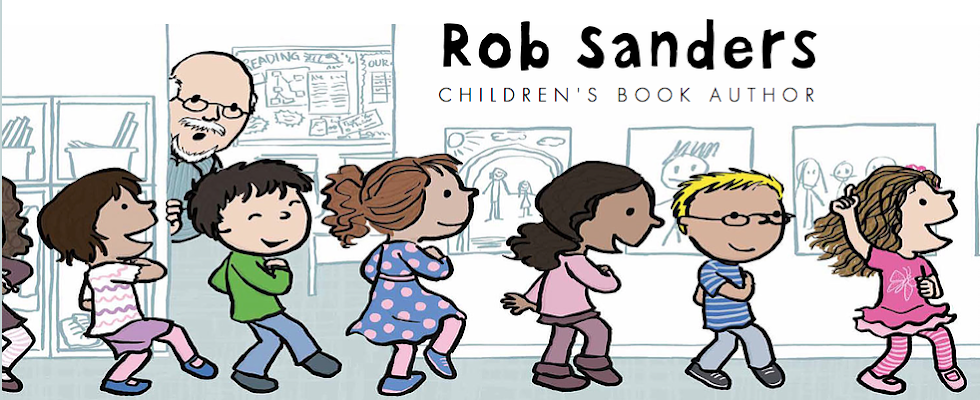Week of July 1, 2012: We’ve Got Trouble!
Tuesday, July 3—Where Does the Trouble
Take These Books?
We’ve
established that having trouble (or a problem) in a picture book is essential,
and that the trouble has to be on a big scale for the main character. But it’s
not enough to have trouble at the beginning of a picture book. The trouble has
to grow and grow, and the situation must become worse and worse for the main character.
Often the worsening situation leads to a black moment when it seems all is
lost, the situation is hopeless, and the character is going to be defeated by
the trouble. Then, of course, the trouble/problem is solved and the story is
resolved.
Today
we’re going to look at the same set of books we examined yesterday, and we’ll
see how the trouble grows and grows and grows in each of these examples.
!From Comes A Wind by Linda Arms White and Tom
Curry:
Trouble/Problem: Mama wants her
squabbling boys to get along on her birthday.
Escalation:
XThe boys arrive and immediately begin to
try to outdo each other
XClyde tells a
tall tale about the wind/Clement tries to outdo
XMama nearly
catches the boys arguing
XClyde and Clem
trade wind tales again
XThey stop as
Mama comes out
XThen the real wind comes up—blowing the animals,
the barn, and everything
else all around the farm
Black
moment:
Finally
the wind blows Mama all the way up to the weathervane where she gets stuck
Climax:
The
boys have to work together to save Mama and her birthday
!From The Curious Garden by Peter Brown:
Trouble/Problem: A green-less
world
Escalation:
XThe boy discovers
a dark, abandoned railroad and a small patch of wildflowers
on the top of the tracks
XThe boy tends
the flowers and they grow—then winter comes and the garden is
gone
X(NOTE:
Illustrations throughout the book amp up the problem by showing
factories, abandoned
buildings, smoke stacks, abandoned cars, litter, etc.)
XThe boy spends
winter preparing for gardening/Winter takes a toll on the garden
XThe boy works
the garden back into shape/The garden begins to spread
XPlants begin
popping up all over town—and so do gardeners
Climax/Resolution:
Years
later the city is abloom
!From: Cowboy Camp by Tammi Sauer and Mike
Reed:
Trouble/Problem: Not fitting in
at Cowboy Camp
Escalation:
XAvery’s name
wasn’t like the other cowboys
XCan’t eat cowboy
food
XAllergic to
horses
XGets rope burns
from the lasso
Black
Moment:
A
bad cowboy arrives at night to destroy Cowboy Camp
Climax:
Avery
uses all of his cowboy inadequacies to convince the bad cowboy that this is
not
Cowboy Camp—thus saving the camp
!From: Click, Clack, Moo: Cows Can Type by
Doreen Cronin and Betsy Lewin
Trouble/Problem: Typing cows
Escalation:
XThe cows demand electric blankets/farmer
refuses/cows refuse to give milk
XCows type again/The cows say the hens
want electric blankets, too
XFarmer types a letter/no
blankets/demands milk and eggs
Black
Moment:
Cows
and chickens don’t know what to do/send letter and offer to trade typewriter
for electric blankets/Duck delivers message
Climax/Resolution:
Ducks
keep typewriter and demand a diving board
!From: Come On, Rain! By Karen Hesse and Jon J.
Muth
Trouble/Problem: The lack of
rain
Escalation:
XSees clouds in
the distance/“Come on, rain!”
XMama says not to
put on swim suit/little girl convinces Mama rain is
coming/puts on suit/“Come
on, rain!”
XRain comes
XGirls play in
the rain/make so much noise they disturb neighbors
Climax:
Neighbor
throws shoe at girls/but the neighbor women are actually taking off hose and
shoes/ and join the girls in the rain (including Mama)
Resolution:
Mama
and girl walk home together as rain ends and sun comes out
!From Cowlick by Christin Ditchfield and
Rosalind Bearshaw
Trouble/Problem: Someone or
something is clomping down the hall at night
Escalation: (NOTE: A lot of
the escalation comes through the illustrations)
XThe cow slowly
turns the doorknob
XHe lifts the
covers and sees the sleeping boy
XQuickly and
quietly the cow bends to give the boy a kiss
XThen kisses
everyone else
Black
moment:
SLURP!
Cowlick!
Resolution:
In
the morning they try to brush their hair, but how can you get rid of a cowlick?
What do these examples show us?
R
The trouble can get worse in a variety ways.
R
Worse doesn’t have to always mean
pain and agony—it can mean humor, it can mean an escalation of events, it can mean
one calamity after another, and more.
R
Trouble can be shown through words, through illustrations, or through a
combination of both.
It’s Your Turn!
uGrab your stack of picture books from yesterday and see what escalation in trouble you can find in each book.
uGrab your stack of picture books from yesterday and see what escalation in trouble you can find in each book.
vBe
sure to look at the illustrations as well as the text for the trouble.

No comments:
Post a Comment